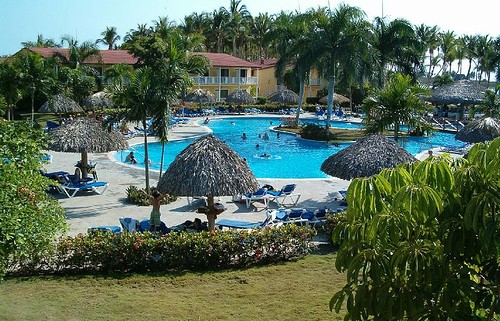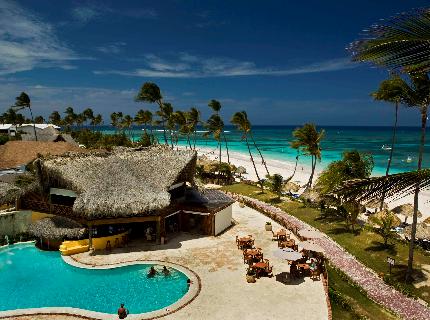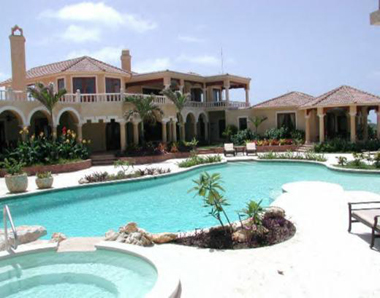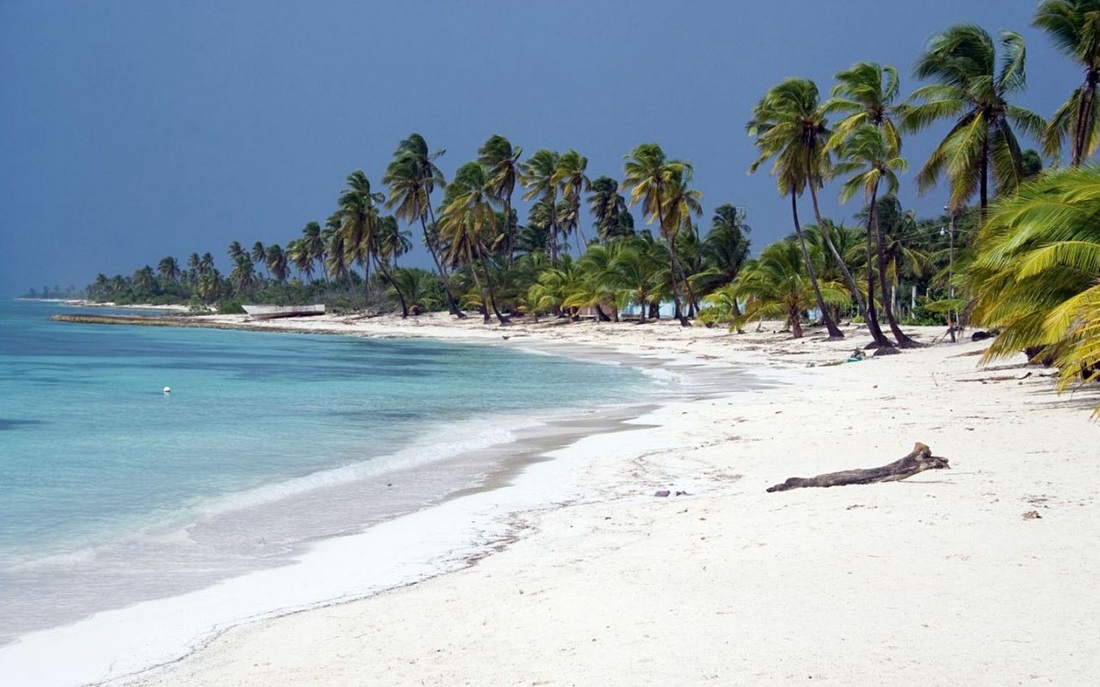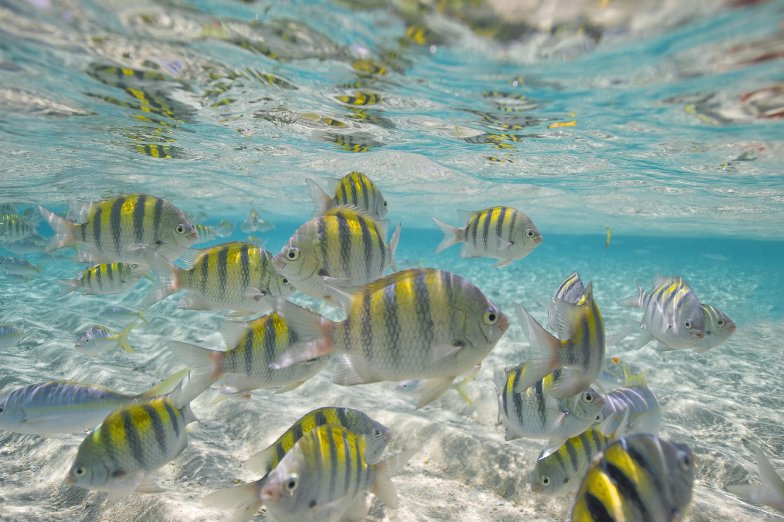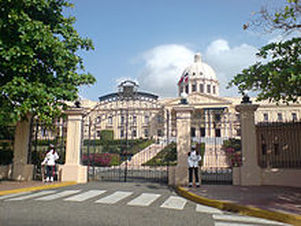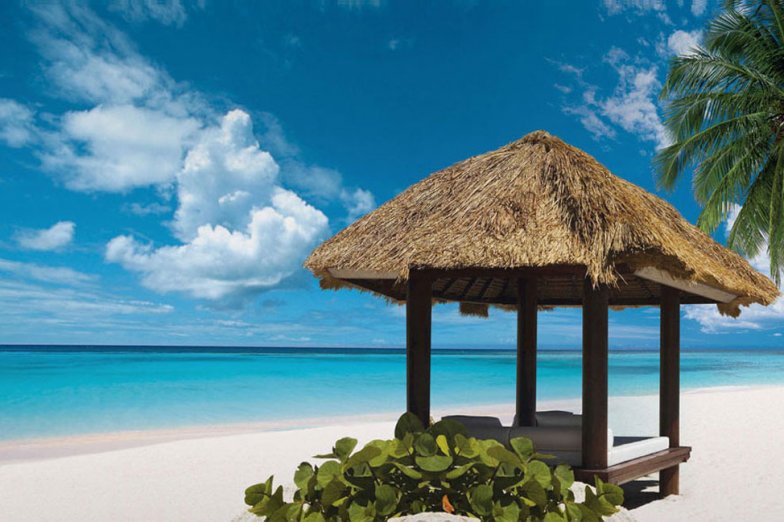PeopleThe population is about 8.4 million, growing at a rate of 1.6 %per year. 73% of the population is mixed race, with combinations of descendants of Spaniards and other Europeans, West African slaves, and natives. 16% is Caucasian and 11% is black, primarily of Haitian origin. Dominicans have migrated from rural areas to the cities, and the capital, Santo Domingo, has over 2.14 million people, while the population of other large cities, including Santiago de los Caballeros, La Romana, and San Pedro de Macoris, ranges from 124,000 to 364,000. The estimated birth rate ranges from seventeen to twenty-five per thousand.
|
The Dominican Republic is situated on the eastern two-thirds of the island of Hispaniola and is about double the size of New Hampshire. Hispaniola is roughly near the center of the West Indies, a cluster of islands that extend from Florida to Venezuela. To the north of Hispaniola is the Atlantic Ocean; to the south, the Caribbean Sea; to the east, Puerto Rico; and to the west, Cuba.
The Dominican Republic is a familiar tourist destination, with glorious-white beaches, gorgeous landscapes, and rhythmic sounds of Latin American music. In addition to its reputation as a warm and generous country, with many options for travelers including snorkeling, sightseeing, and swimming, the Dominican Republic is one of the less expensive destinations for travelers in North America. The largest city is Santo Domingo, the cultural, political and economic hub of the country, and it presents many opportunities for pulsating activities. This big, sprawling metropolis is the heartbeat of The Dominican Republic. |
GeographyMountains separate the country into northern, central, and southwestern regions. The northern region consists the Cordillera Septentrional (northern mountain range), the Cibao Valley, the main agricultural area; and the tropical Samana Peninsula with coconut plantations and the bay, where humpback whales breed. The central area is dominated by the Cordillera Central (central range) which ends at the Caribbean Sea. The highest point in the Caribbean is Pico Duarte, reaching an elevation of over 10,414 feet and with alpine forests near the summit. The Caribbean coastal plain consists of a series of limestone terraces. The climate is mostly tropical, especially along the southern and eastern coasts. The timing and severity of the rainy season varies in different parts of the country, but normally it occurs in late spring and early fall.
|
HistoryWhen Christopher Columbus discovered the island in 1492, he named it La Isla Espanola, which eventually became Hispaniola. A few years later, the city of Santo Domingo became the Spanish capital of the New World, and because of its location in the trade winds, it became the gateway to the Caribbean. In 1838 a small group of Spanish-speaking Dominican intellectuals from Santo Domingo structured a secret society, called La Trinitaria, to bring down the Haitian rule. Juan Pablo Duarte, the son of a rich Dominican family, instituted the society. After the overthrow, Pedro Santana, one of the leaders in the revolt, became the first president of the Dominican Republic.
The multifaceted heritage of Arawak, Spanish, African, and French traditions, in addition to early independence, set the Dominican Republic apart from other Caribbean islands. The Dominicans consider themselves more Latin American than Caribbean., and they maintain close ties with the United States, which occupied the island in the early twentieth century. The current government is a representative democracy. |
Famous AttractionCathedral of Santa Maria:
Built in 1523, the Cathedral of Santa Maria is the oldest cathedral in the western hemisphere. It is a mix of late Gothic and Renaissance details and it provides a stunning example of Spanish Renaissance architecture, with its golden coral facade and Gothic interior. Its walls have witnessed a great deal of history, including the arrival of Sir Francis Drake. Columbus Lighthouse Monument: This is the most contemporary memento of Santo Domingo's status as the oldest European city in the Americas. It is an enormous structure built on the eastern shore of the Ozama River in the early 1990s to remember the 500th anniversary of Columbus' arrival in the New World. Colonial City: The Colonial City is the historic enclave of Santo Domingo, covering only one square mile, but within the walls are dozens of historical buildings and sites, including museums, palaces, forts, churches, parks, plazas, statues, and monuments. |
NightlifeThe Dominican Republic offers a pleasurable nightlife, with entertainment ranging from a Las Vegas-style revue with discos and casinos, to a quiet cafe by the sea in Santo Domingo. Bars, clubs and dance halls dot the area, while hotels offer more traditional shows, including folk music and dancing. Popular dances are: the meringue, played very loudly almost everywhere; bachata, which is becoming very popular in tourist hotspots; perico ripiao; and the salsa. The Malecon, Santo Domingo's seaside boulevard, is known for a pleasant nightlife with concerts and other cultural events often held at the Casa de Francia and Plaza de la Cultura in Santo Domingo, among other venues.
|
Culture
Columbus and the Spanish missionaries introduced Catholicism, and it is still a significant force influencing society. About 95% of the population is Roman Catholic, but the supremacy of the Catholic Church was decreasing at the end of the twentieth century. There are some Protestants descendants of non-Spanish immigrants who came to the island in the early 1800s, and the Protestant evangelical movement has been gaining more support.
Spanish is the official language and Dominicans pride themselves on the clarity of their Spanish, regarded by some as the most conventional Castilian spoken in Latin America. English is spoken in Santo Domingo, specifically within the areas serving the tourist industry, and some Creole is spoken near the Haitian boundary and in the sugarcane villages, where many Haitian workers reside.
Spanish is the official language and Dominicans pride themselves on the clarity of their Spanish, regarded by some as the most conventional Castilian spoken in Latin America. English is spoken in Santo Domingo, specifically within the areas serving the tourist industry, and some Creole is spoken near the Haitian boundary and in the sugarcane villages, where many Haitian workers reside.
CuisineDominican cuisine is primarily a mixture of Spanish and African influences over the last few centuries. The dishes usually make use of all the food groups, incorporating meat or seafood; rice, potatoes, or plantains; and is combined with some other type of vegetable or salad. However, meals typically favor starches and meats over dairy products and vegetables. Many dishes are made with sofrito, a flavorful combination of spices and local herbs sauteed to emphasize the dish's flavor. All through the south-central coast, bulgur or whole wheat is a chief ingredient in quipes o tipili (bulgur salad). Other favorite Dominican dishes consist of casabe, yuca, pastelits (empanadas), batata, tostones, pasteles en hoja, (ground-roots pockets) chimichurris, platanos maduros (ripe plantain), and chicharron. Dominicans also enjoy bizcocho dominicano (lit. Dominican cake), arroz con dulce (or arroz con leche), habichuelas con dulce (sweet creamed beans), flan, dulce de leche, cana (sugarcane), and frio frio (snow cones). Many of these same dishes are common to Puerto Rico.
|
Qunar

